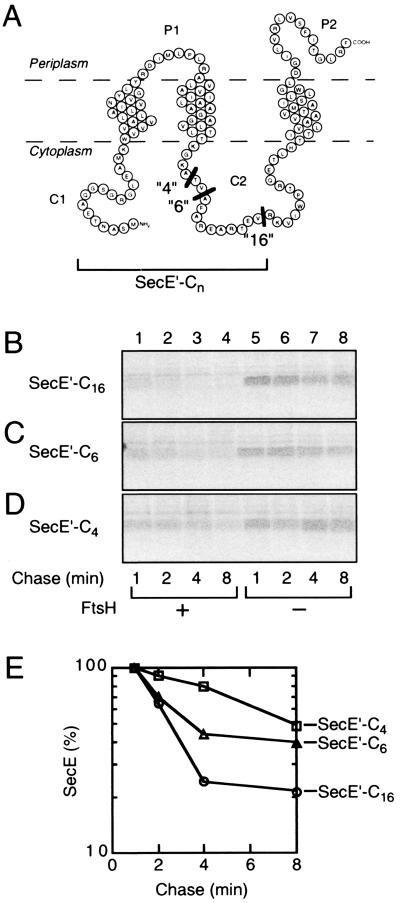FIG. 5.
FtsH susceptibility of SecE derivatives having a C-terminal cytosolic tail due to a truncation at the central cytosolic domain. (A) Schematic representation of the SecE derivatives. The truncation points are indicated by black bars. (B to D) Pulse-chase experiments. Strains AR5087 (ftsH+; lanes 1 to 4) and AR5090 (ΔftsH; lanes 5 to 8) were transformed with either pCH276 (SecE′-C16) (B), pCH293 (SecE′-C6) (C), or pCH292 (SecE′-C4) (D). Cells were induced for lac transcription and pulse-labeled with [35S]methionine for 1 min, which was followed by a chase with unlabeled methionine for 1, 2, 4, and 8 min, as indicated. Labeled proteins were immunoprecipitated with anti-SecE N1 serum, separated by SDS-PAGE, and visualized. (E) Graphical representations of the degradation kinetics in the ftsH+ cells. Radioactivities associated with SecE′-C16 (circles) (from panel B, lanes 1 to 4), SecE′-C6 (triangles; from panel C) (lanes 1 to 4) and SecE′-C4 (squares) (from panel D, lanes 1 to 4) are plotted as values relative to that at the 1-min chase point for each protein.

